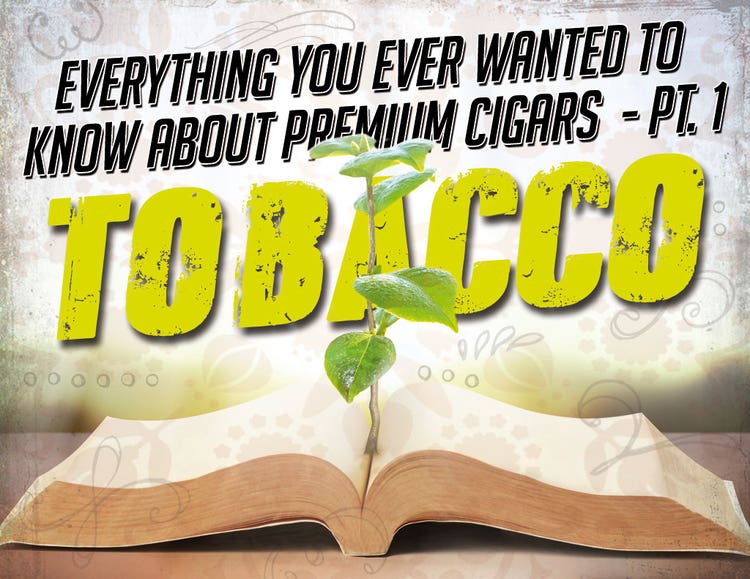
Everything You Ever Wanted to Know about Premium Cigars Part 1 – Tobacco
Premium Cigars 101: Tobacco
With the amount of history and passion involved in the creation of handmade premium cigars, it’s no wonder they have transformed from “habit” to “hobby.” Still, in the end, cigars are as complicated as you want to make them. But there’s lots to enjoy – and the more you know, the better you can enjoy premium cigars…so let’s go deeper down the rabbit hole!
There is so much to know about cigars that it’s hard to know where to begin, but a good frame of reference is wine:
• Like wine grapes, cigar tobacco is the product of seeds and “terroir,” or the local soil and weather conditions
• Like many wines, different outcomes are achieved by mixing various components in various proportions
• Both premium cigars and wine are handmade, natural agricultural products
Growing the tobacco used in premium cigars is an art unto itself. Tobacco seeds are germinated in a greenhouse before the seedlings are planted out in the fields. Once ready for harvest, each “level” of leaves from the tobacco plants (called primings) is harvested in its own time. The varying levels of the tobacco plant correspond to the tobacco’s strength and aroma, with the uppermost leaves being the strongest. From top to bottom, the primings are Ligero, Viso, Seco, and Volado (sand leaves, not generally used).
Once harvested, the tobacco is cured (dried) in a curing barn to achieve the proper moisture content, and then fermented to convert the sugars, rid them of ammoniacs, and make them palatable. After fermentation, they may be aged additionally. The term “maduro,” literally “mature,” refers to various processes of heat and pressure which cause the tobacco to become even darker and sweeter. While often applied to color, it ought to be applied only to tobacco which has been processed using these techniques. As you will soon discover, cigar makers have no problems thoroughly confusing cigar smokers by using terms interchangeably.
Cigar tobacco (especially wrapper tobacco) is variously identified by its seed type, origin (nation, city, valley, etc), whether shade- or sun-grown, color, and fermentation. For example:
• Ecuadorian Connecticut means Connecticut seed grown in Ecuador.
• Ecuadorian Connecticut Shade means the same, but specifies that the tobacco was grown under shade tents.
• Connecticut Broadleaf Maduro means Broadleaf tobacco seed grown in the Connecticut River Valley which was subjected to extended heat, pressure, and other processes to achieve a darker color and greater concentration of sugars, as explained above.
In the next installment, we’ll explore some of the more esoteric terms used to define premium cigars.